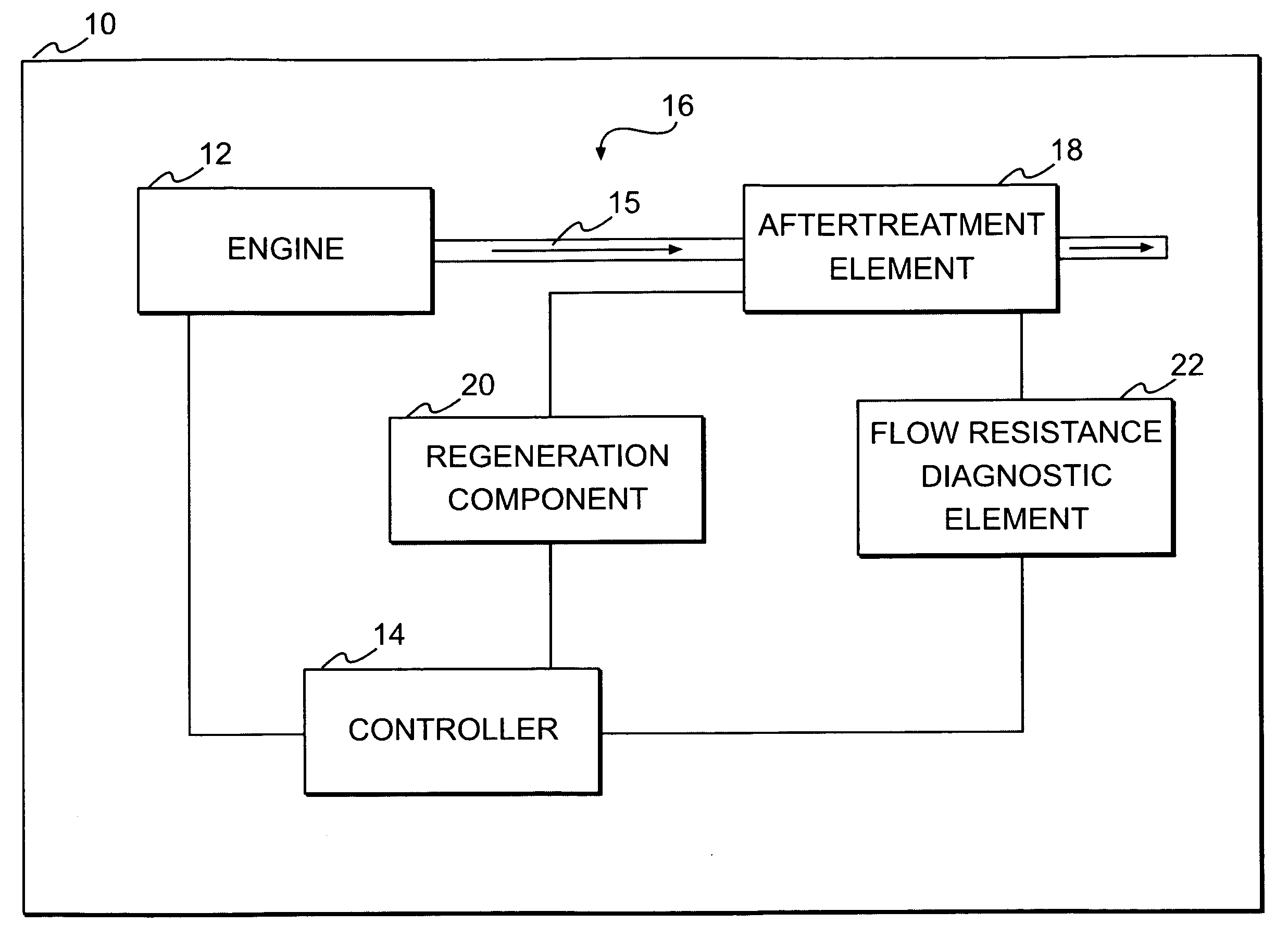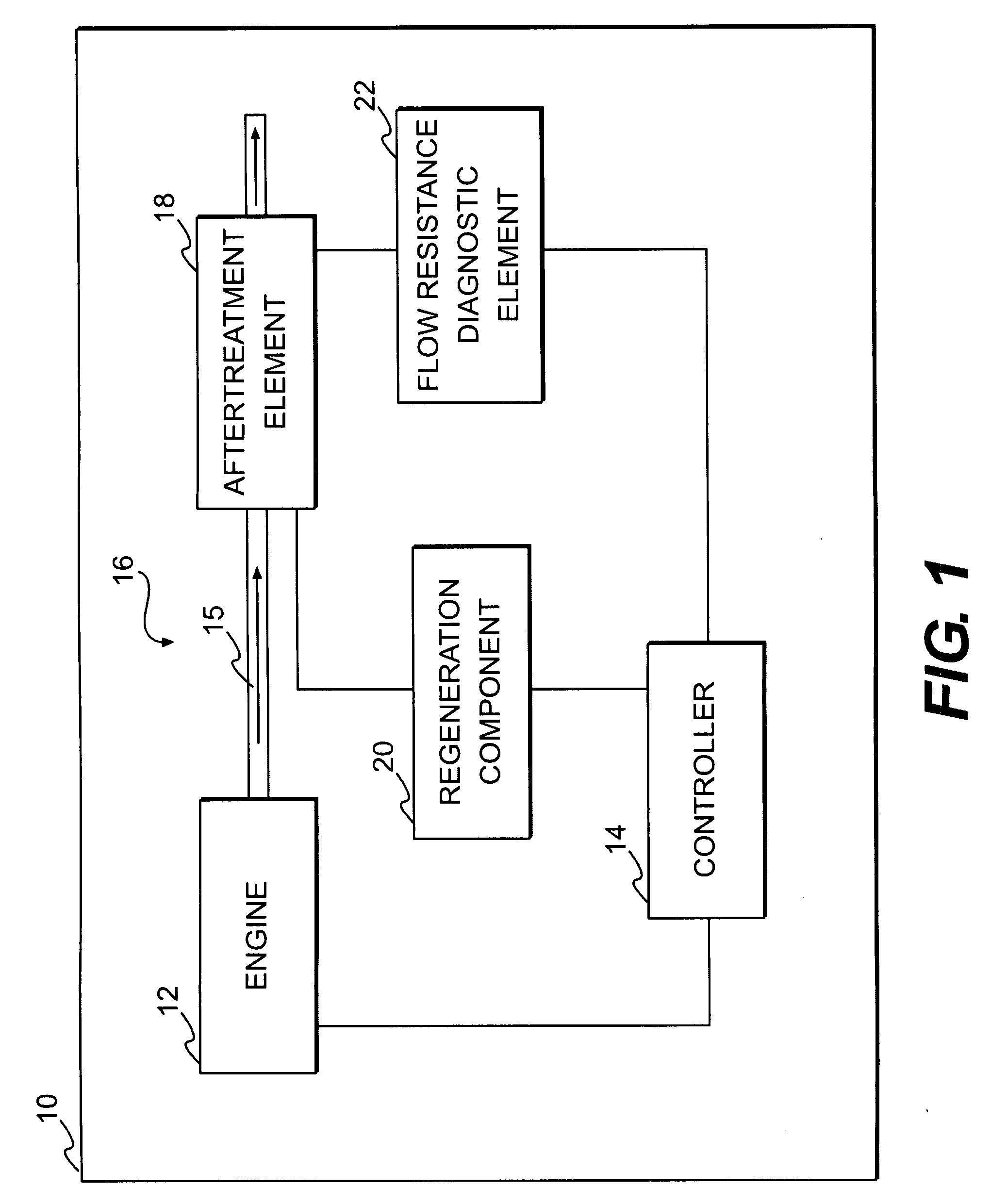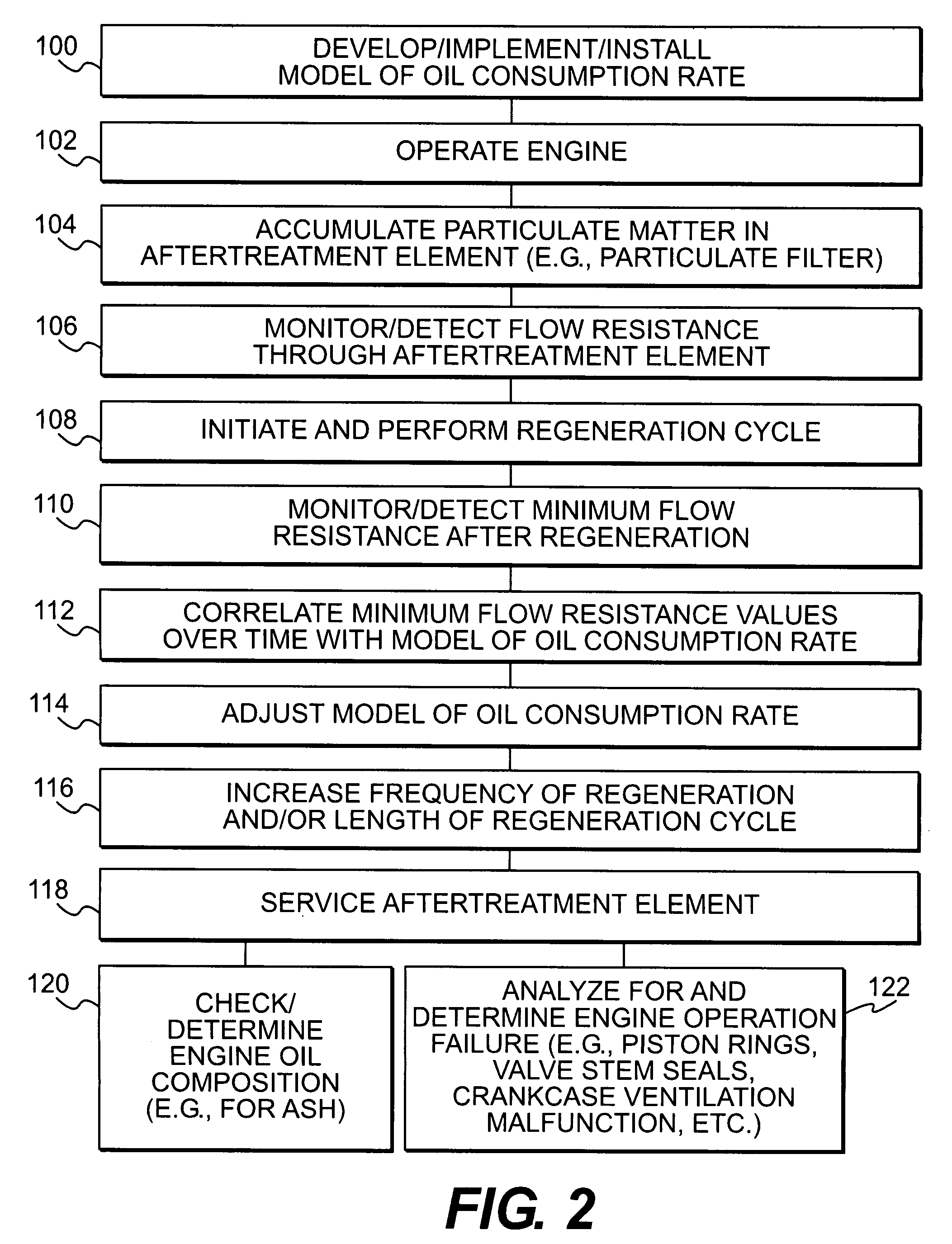Method and system for maintaining aftertreatment efficiency
a technology of aftertreatment and efficiency, applied in the direction of engines, mechanical equipment, machines/engines, etc., can solve the problems of affecting the ability of the particulate filter, and affecting the efficiency of the aftertreatmen
- Summary
- Abstract
- Description
- Claims
- Application Information
AI Technical Summary
Benefits of technology
Problems solved by technology
Method used
Image
Examples
Embodiment Construction
[0015]A machine 10, in which exemplary disclosed embodiments may be implemented, is diagrammatically represented in FIG. 1. Machine 10 may be any of various machines, including an on-highway truck, an off-highway haulage unit, an excavating machine, a material handling machine, a stationary power generating machine, any of various heavy equipment machines, or any other machine which may benefit from implementation of embodiments according to the disclosure.
[0016]An engine 12 may be associated with machine 10. Engine 12 may be any one of various types of engines, such as, a gasoline fueled engine, a diesel fueled engine, or a gas fueled engine. A controller 14 may be part of a control system associated with machine 10 and engine 12. Controller 14 may be programmed, via hardware, software, algorithms, etc., to monitor and control operation of engine 12, various components associate with engine 12, and / or other machine components.
[0017]Engine 12 may include an exhaust system 16. Exhaus...
PUM
 Login to View More
Login to View More Abstract
Description
Claims
Application Information
 Login to View More
Login to View More - R&D
- Intellectual Property
- Life Sciences
- Materials
- Tech Scout
- Unparalleled Data Quality
- Higher Quality Content
- 60% Fewer Hallucinations
Browse by: Latest US Patents, China's latest patents, Technical Efficacy Thesaurus, Application Domain, Technology Topic, Popular Technical Reports.
© 2025 PatSnap. All rights reserved.Legal|Privacy policy|Modern Slavery Act Transparency Statement|Sitemap|About US| Contact US: help@patsnap.com



